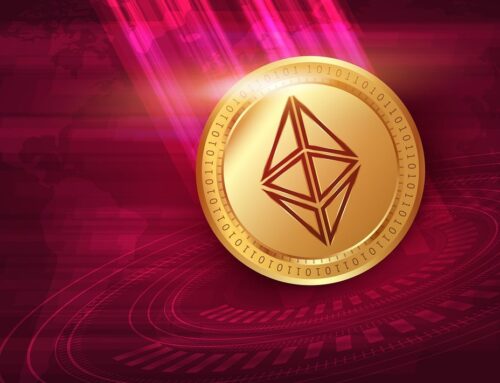Our power, our planet: renewable energy in the telco industry
April 22, 2025
Increasing digital connectivity comes with growing energy demands but this challenge also presents an opportunity. Telecom companies are embracing renewable energy and artificial intelligence (AI) to power a more sustainable future—for the planet and for business.
Why telcos matter in the climate conversation
Telecom networks—both mobile and fixed—account for over 75% of telcos’ total energy consumption (McKinsey, 2023). As demand for data continues to rise and 5G (and future 6G) networks become widespread, total energy use is projected to increase even further. Though many operators are transitioning to more efficient fiber infrastructure, legacy systems must still be maintained in the interim adding to the strain.
And this matters because the telecom sector is estimated to contribute up to 2% of global carbon emissions (McKinsey, 2023). Reaching net-zero is a massive challenge, but also a necessary one—especially considering network operations account for the largest share of telcos’ Scope 1 and 2 emissions, and more than 25% of their total greenhouse gas (GHG) output (McKinsey, 2023).
That’s why many major telecom companies have pledged to achieve net-zero emissions, with some aiming for 2050, and the most ambitious targeting as early as 2025.
AI + clean Energy = a telco transformation
AI is emerging as one of the most powerful tools in helping telcos reduce their carbon footprints. Leading companies like Vodafone, Deutsche Telekom, and Ericsson are using AI to:
- Monitor and optimize energy usage in real-time
- Detect equipment failures before they occur
- Predict and adapt to changes in network traffic demand
For instance, Vodafone uses AI to spot anomalies in its radio networks, detect interference sources, and predict equipment issues for preventive maintenance, all while optimizing energy consumption (Inveniam, 2024). Ericsson, on the other hand, is integrating AI with renewable energy and electric vehicles to reduce operational emissions (Inveniam, 2024). And Deutsche Telekom is using AI to streamline network operations and improve energy efficiency (Inveniam, 2024).
These efforts are not only eco-friendly but cost-effective, proving that AI can balance profitability with sustainability.
How telcos are going green
The shift toward renewable energy is already in motion across the telecom industry. In fact, many companies began tracking and reporting their energy usage years ago.
- BT reported a 16% increase in electricity consumption in the UK since 2015, but now sources almost 100% of that energy from renewables (ING, 2024).
- Telefonica powers 100% of its technical buildings with renewable electricity (ING, 2024).
- KPN shares that 95% of its electricity is used by its mobile and fixed networks, making them a key area for renewable integration (ING, 2024).
One particularly innovative move is RAN (Radio Access Network) sharing, where two or more operators share infrastructure. In Poland, Orange and T-Mobile reduced site numbers by 20% through RAN sharing, resulting in energy consumption savings of up to 30% per site (ING, 2024).
Around the globe: renewables on the rise
The telecom sector’s sustainability push aligns with broader global trends. Countries around the world are proving that renewable energy can be the backbone of national energy strategies:
- Uruguay now generates 98% of its electricity from renewable sources (EarthDay.org, 2024).
- Kenya sources nearly half of its electricity from geothermal, which emits 99% less CO₂ and 97% fewer acid-rain compounds (EarthDay.org, 2024).
- Denmark generates more than 50% of its electricity from wind power and has already hit 100% renewable energy for 24-hour periods (EarthDay.org, 2024).
These examples are inspiring telcos to go all-in on clean energy.
The payoff: economy, health, and the planet
Economic benefits
- The global renewable energy market was worth $1.21 trillion in 2023 and is projected to grow 17.2% annually through 2030 (EarthDay.org, 2024).
- The U.S. solar industry employed 263,883 workers in 2022, marking 3.5% job growth from the previous year (EarthDay.org, 2024).
- Clean energy investments could save U.S. families $27–38 billion between 2022 and 2030 through the Inflation Reduction Act (EarthDay.org, 2024).
Health gains
The benefits of clean energy go far beyond emissions:
- Reduced air pollution can lower the risks of asthma, stroke, heart attacks, and other respiratory diseases (WHO, 2024).
- Women’s health is particularly impacted, with lower risks of breast cancer, ovarian disorders, and maternal complications when pollution is reduced (CDC, 2024).
- Mental health improves too, thanks to less noise, cleaner air, and reduced climate anxiety (CDC, 2024).
- Healthcare systems save money, with fewer pollution-related illnesses and lower long-term treatment costs (Harvard School of Public Health, 2024).
A connected and cleaner future
This Earth Day, the message is clear: Our power is our planet.
The telecom industry has a unique responsibility—and an incredible opportunity—to lead the way to a sustainable future. With renewable energy, AI, and bold commitments, telcos can do more than keep us connected—they can help protect the planet we all share.
The future is bright, clean, and digital. Let’s power it right.
Search
RECENT PRESS RELEASES
Related Post


